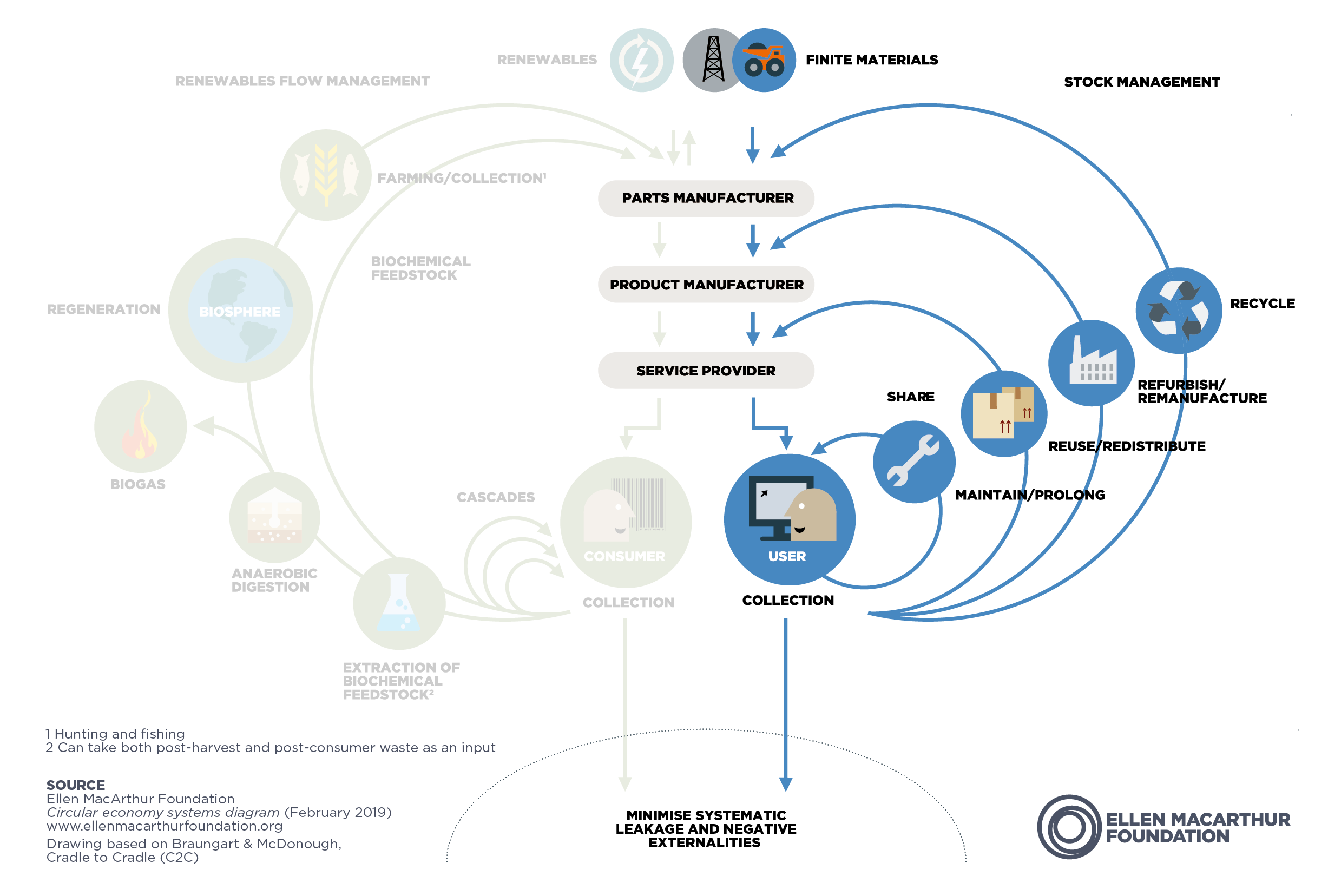
Repair, not replace - Together, we can contribute towards a circular economy by repairing rather than replacing.
The circular economy is based on three principles, driven by design:
· Eliminate waste pollution.
· Circulate products and materials (at their highest value)
· Regenerate nature.
Designed to tackle challenges like climate change, biodiversity, loss, waste, and pollution. This approach works by transforming the way we handle resources, how we manufacture and sell our products, and what happens with the material of those products afterwards.
The focus extends beyond the end of a product’s life, emphasising the importance of incorporating a life-cycle plan into the initial design.
“In our current economy, we take materials from the Earth, make products from them, and eventually throw them away as waste – the process is linear. In a circular economy, by contrast, we stop waste being produced in the first place.” (Ellen Macarthur Foundation) - Makes complete sense right?
This article will demonstrate how our repair centre aligns with the circular economy's second principle. Our services actively contribute to 'Circulate products and materials', offering you the opportunity to repair your equipment instead of replacing it for new wherever possible.
It will also highlight the significance of extending the life cycle of Veterinary specific equipment, to minimise wastage and contribute to a sustainable future.
Product Design and its impact on the ‘Technical Cycle’
The absolute key to waste reduction lies in maximising the value of equipment, ensuring it remains a functional part of the ‘Technical Cycle’ for as long as possible.
‘In the technical cycle, products are kept in circulation in the economy through reuse, repair, remanufacturing, and recycling’ (Jana Vrzel, 2022) www.circularinnovationlab.com
The Ellen Macarthur Foundation emphasises the importance of designing products with their eventual circulation in mind for successful integration into the technical cycle.
“In order for products to successfully be circulated in either the biological or the technical cycle, it is essential they have been designed with their eventual circulation in mind’ (Ellen Macarthur Foundation).
At Burtons, we prioritise designing our equipment with three key principles: lasting a ‘Lifetime, offering bespoke aftercare service plans, and constructing products with materials that can be easily separated and recycled at the end of their life.
Additionally, when introducing products from other suppliers, we subject them to rigorous assessment and testing. This is not just for quality control measures, but also for ensuring that the product can be effectively repaired should the need arise, aligning with our commitment to sustainability.
At Burtons, we strive to maintain every aspect of this technical cycle by providing equipment-preventative maintenance plans. This involves thorough annual examinations delivered by our field service engineers or our in-house repair centre technicians.
Planned preventative maintenance or a Minor/Major repair to a device can significantly extend its operational life, not to mention ensuring it is safe for continued use and compliant for the end user. Ultimately saving you the expense of replacing it with a new one.
For equipment that is used infrequently, you could consider a loan/ hire service. This service provides a sustainable alternative to buying a device and never being able to maximise its full use.
Both options, inevitably reduce waste by ensuring the equipment gets as much use as possible during its life cycle.
A Patient Monitor Life Cycle
See how the circular economy's stock management process is demonstrated by the life cycle of a patient monitor sitting in your practice right now.
1. You purchased the required patient monitor from Burtons.
2. The monitor becomes a critical device regularly used across your practice, during clinical procedures. (SHARED)
3. A preventative maintenance plan is in place to ensure it is safe, compliant, and performing as intended. This is key to ensuring the device’s expected life is maximised. (MAINTAIN)
4. Should you have a desire to upgrade the device with alternate specifications, the well-maintained monitor can be passed onto another practice, or donated to a charitable organisation. (RE-USE/ REDISTRIBUTE)
5. In the unfortunate event the device malfunctions, our Service & Repair Centre Team assess the repair and the monitor. (REFURBISH)
6. If the device is deemed beyond repair, each part is meticulously disassembled and recycled to minimise environmental impact. (RECYCLE)
We believe that by adopting these best practices, we collectively contribute to a sustainable and environmentally conscious ecosystem.
Consider the scenario where you acquired that Patient Monitor but never maintained it, and it subsequently developed issues.
Instead of servicing or repairing the device, you dispose of it because you've found a reasonably priced direct replacement and are concerned about the potential operational downtime without one. Contrastingly, in the first scenario, that monitor would have been utilised hundreds of times more, likely extending its overall lifespan. Additionally, upon reaching the end of its usable life, every component was recycled and repurposed.
Or perhaps you consider building operational resilience by keeping and repairing the existing device but moving this into your resilience pool and adding a new device to avoid unnecessary operational pressures.
Together, we can contribute to the circular economy.
Many of us want to do our best to contribute to a greener future, and sometimes the avenues to do this almost seem overwhelming.
However, there are simple actions we can integrate into everyday practice that can deliver significant impacts. Imagine we followed this diagram with every product we purchase, be it for our practice, or ourselves. The cumulative effect is remarkable.
It transforms the narrative from just taking care of a singular patient monitor, to actively participating and contributing to a comprehensive circular economy. This collective effort not only ensures the longevity of your equipment but also plays a substantial role in safeguarding the environment we live in.
Learn more about our repair centre services, or download your first repair form here


